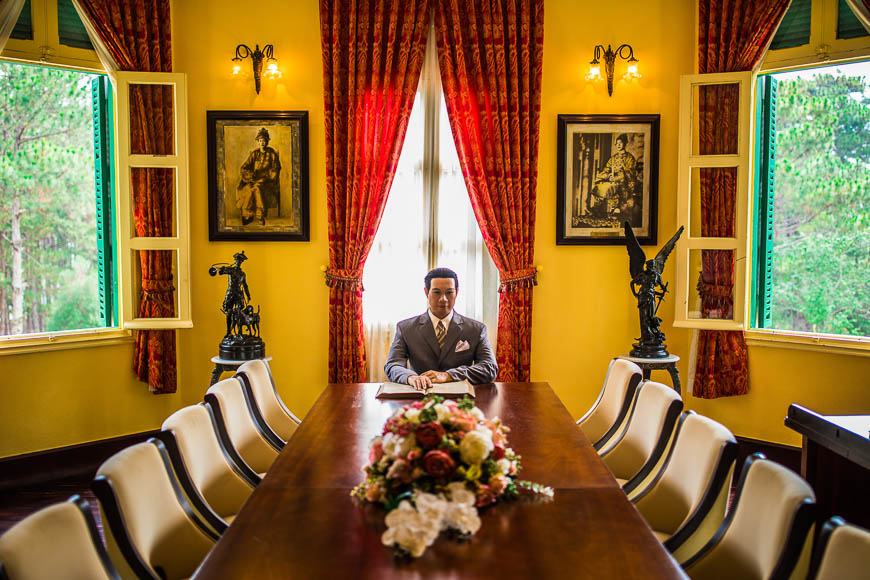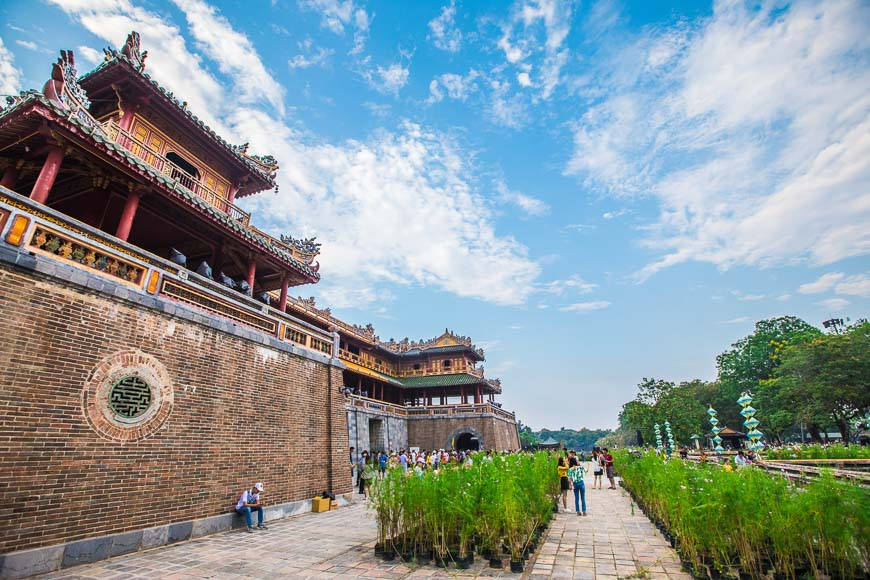Vietnam’s final reigning emperor is one of the most fascinating figures in the country’s history, and chances are you’ve never heard of him.

Emperor Bảo Đại inherited the throne at the age of 13, and ruled the country from 1925 until his abdication to the Việt Minh in 1945. He was the last of the Nguyễn Kings who united the country and built a feudal capital along the Perfume River in Hue.
Bảo Đại’s larger-than-life biography reads like a work of fiction, leaving a complicated and intriguing legacy in an era of turbulence. Visit these historical sites in Vietnam for a hands-on history lesson and personal glimpse into the life of Vietnam’s last emperor.
Khải Định Tomb, Hue

Bảo Đại was the only son of Emperor Khải Định. Khải Định briefly ruled the country from 1916 to 1925. In 1920, Khải Định ordered the construction of a palatial tomb in Hue, a practice followed by the Nguyen Dynasty lords before him. Construction was still ongoing five years after his death, and finally finished in 1931. Standing proudly on a hill just outside the city, this opulent and extraordinary monument of excess offers a view into the merging worlds of feudalism and colonialism which Bảo Đại was born into.
Hours of operation: 7:00 am to 5:30 pm
Tickets: 100,000 VND
An Dinh Palace, Hue

This ornate fusion of eastern and western design is a unique memento of French influence on the Vietnamese royalty. Construction of this stately home was ordered by Bảo Đại’s father, Khải Định in 1917. The halls, walls, furniture and decor all speak to a profound affinity for French and European culture. The style of the palace blends French and Vietnamese motifs. Bảo Đại spent some of his formative years here, and returned to visit throughout his reign. This well-maintained building is a must-see for architecture enthusiasts and history buffs. Upstairs an exhibit of vintage photographs depict the life of the last Vietnamese emperor, his elegant wife Nam Phuong, and their children.
Hours of operation: 8:00 am to 11:00 am, 2:00 pm to 5:00 pm
Tickets: 40,000 VND
Sleep on it: Emperor Cruises

If you want to immerse yourself in the story of Emperor Bao Dai's reign, there's even a cruise inspired by his lavish lifestyle. Emperor Cruises takes inspiration from Vietnam's last Nguyen King to create a unique sailing experience in Ha Long Bay and lesser-known Bai Tu Long Bay. Black and white pictures of Bao Dai, his family, and royal events in the Imperial City of Hue grace the walls, and every day you can look forward to beautiful gourmet meals -- fit for a king.
The Dalat Palace Hotel

Though this structure has seen many renovations over the years, its old-world ambience remains very much intact. Set within a sprawling garden on a grassy hill in the mountain town of Dalat, the Palace Hotel opened in 1922 and quickly became a favourite retreat of French elite Vietnamese families. The hotel boasted modern conveniences and the finest in French style and service. After Bảo Đại met his first wife, Nam Phương at a party in 1933, the pair would meet at this hotel to dine together. The couple married in 1934. Today the well-preserved hotel is open to guests.
Official Website of Dalat Palace Hotel
The Imperial Citadel, Hue

This enormous palace is a UNESCO-listed heritage site, and one of the most famous historical landmarks in Vietnam. The citadel was built under the direction of the Nguyễn Dynasty kings, who ruled Vietnam from the city of Hue from 1802 to 1945. Bảo Đại’s elaborate royal wedding took place here over the course of four days in March of 1934. The ceremony captured the imagination and attention of the international press and the world. The emperor and empress would have five children together. Although much of the Hue Citadel and its Forbidden Purple City was ruined during Vietnam’s wars, parts have been faithfully restored, including the impressive Noon Gate and Thai Hoa Palace.
Hours of operation: 8:00 am to 5:30 pm
Tickets: 150,000 VND
The Summer Palace (Palace III), Dalat

Nestled in a pine forest, this art-deco palace was commissioned by Bảo Đại in 1933 and completed in 1938. It was the last palace the Emperor would build in Vietnam. Bảo Đại spent much of his time here, including some of his final days in Vietnam. A large portrait of the former Emperor hangs over the fireplace, the walls are decorated with trophies from his hunting trips. Bảo Đại had the palace and surrounding grounds built to his specifications, with a terrace for stargazing. Today you can tour the grounds and villas, which are set up as museums full of the family’s mementos.
TIP: Bảo Đại and a royal entourage would trek into the highlands of Dalat for weeks at a time to hunt big game. One of his favourite stops was breathtaking Bảo Đại waterfall, a secluded attraction well-worth the effort.
Hours of operation: 7:00 am to 5:30 pm
Ticket prices: 20,000 VND





